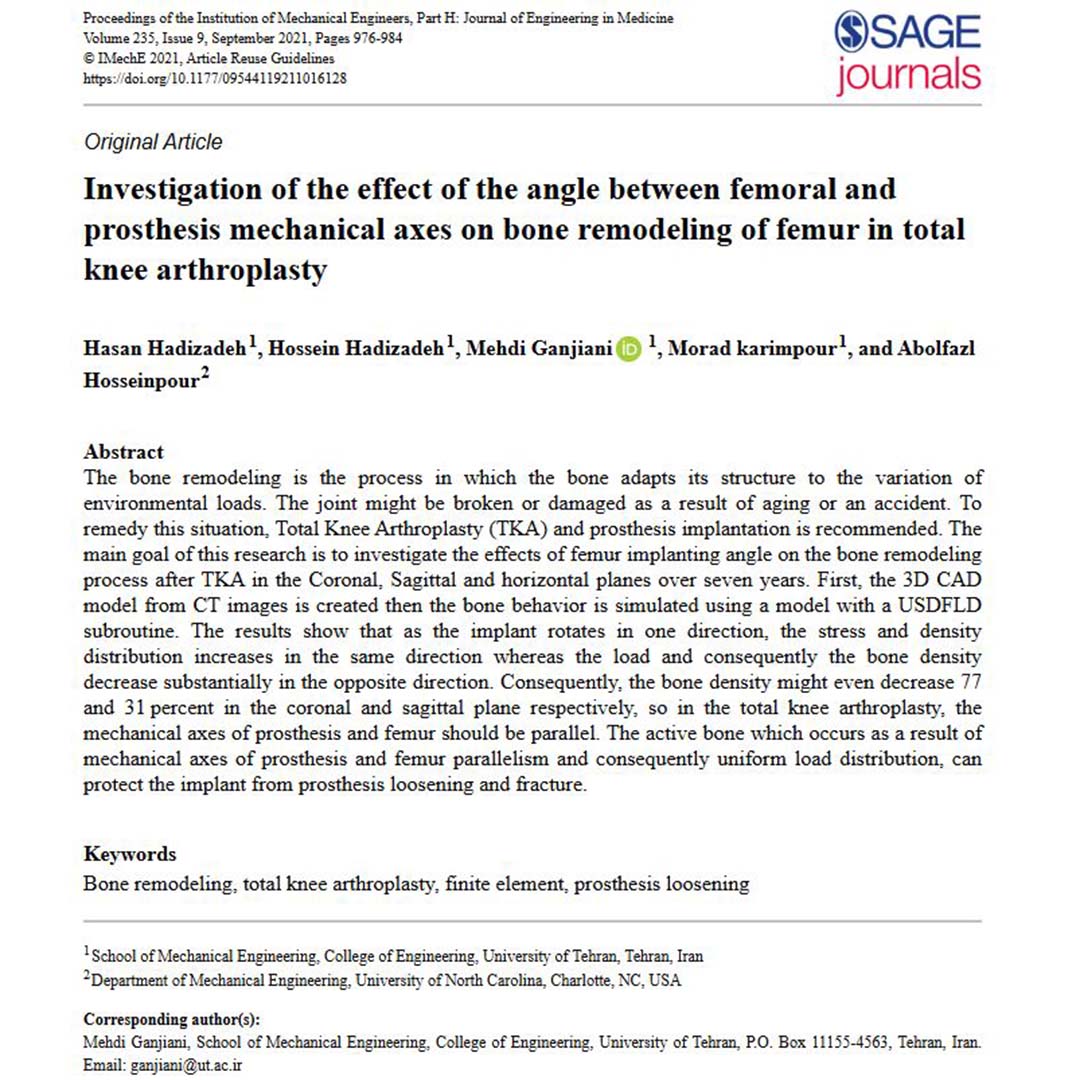Journal: Proceedings of the Institution of Mechanical Engineers, Part H: Journal of Engineering in Medicine
Authors: H Hadizadeh, H Hadizadeh, M Ganjiani, M Karimpour, A Hosseinpour
Abstract
The bone remodeling is the process in which the bone adapts its structure to the variation of environmental loads. The joint might be broken or damaged as a result of aging or an accident. To remedy this situation, Total Knee Arthroplasty (TKA) and prosthesis implantation is recommended. The main goal of this research is to investigate the effects of femur implanting angle on the bone remodeling process after TKA in the Coronal, Sagittal and horizontal planes over seven years. First, the 3D CAD model from CT images is created then the bone behavior is simulated using a model with a USDFLD subroutine. The results show that as the implant rotates in one direction, the stress and density distribution increases in the same direction whereas the load and consequently the bone density decrease substantially in the opposite direction. Consequently, the bone density might even decrease 77 and 31 percent in the coronal and sagittal plane respectively, so in the total knee arthroplasty, the mechanical axes of prosthesis and femur should be parallel. The active bone which occurs as a result of mechanical axes of prosthesis and femur parallelism and consequently uniform load distribution, can protect the implant from prosthesis loosening and fracture.
Keywords: Bone remodeling; finite element; prosthesis loosening; total knee arthroplasty.

